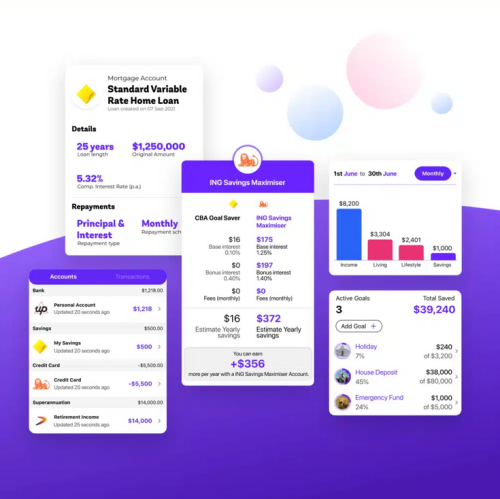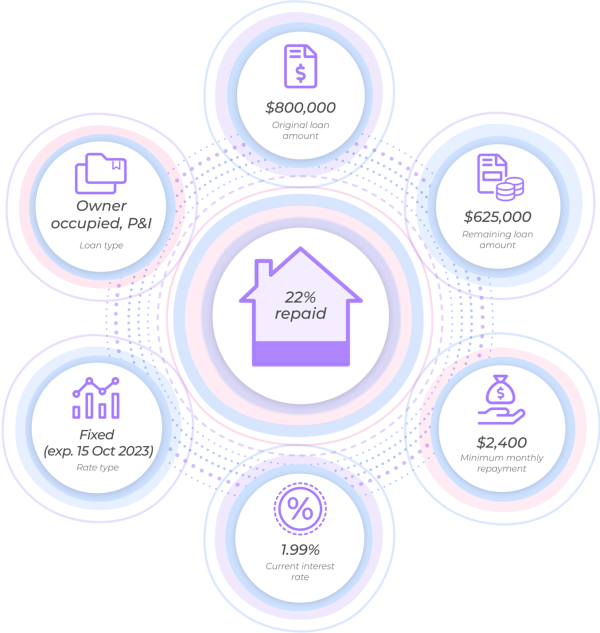
Op-ed: Busting Open Banking myths
What’s the actual ‘state of Open Banking’?
Two and a half years into Open Banking, you would be right to ask how things are going.
The expectation, or hope, was one of widespread adoption after a few years – we’re not quite there yet.
But how are things really going? Which banks’ data is readily available for use? What’s the quality of that data? And who is offering Open Banking powered services to consumers today?
Although many answers to these questions are circulating, they’re not all based on facts. So, using data from our Open Banking platform, extensive consumer research, deep industry relationships, and years of operational experience, we set out to separate fact from fiction and bust some Open Banking myths!
Data availability in Open Banking
Myth #1 – Most banks and financial products aren’t available via Open Banking
Open Banking launched in Australia on 1 July 2020, with only the Big Four banks and a few financial products available. In the two and a half years since, the regime gradually expanded to what it is today: more than 110 banks share data for over 30 financial products.
From transaction and savings accounts to mortgages and personal loans – they’re all available via Open Banking. A significant milestone was on 1 October 2022, when data-sharing obligations for joint accounts kicked in for non-major banks, and the initial Open Banking roll-out was completed.
The Treasury estimates Open Banking currently covers over 99% of all household deposits in Australia.
What’s more, some providers that weren’t available via traditional ways of data sharing, like Up, HSBC, Wise and Paypal, are available via Open Banking. And, as more banks implement security measures to combat Electronic Data Capture, aka screen-scraping, Open Banking is becoming the standard on which businesses can rely.
There are still some gaps, though: Non-bank lenders, Buy-Now-Pay-Later, pay-day lenders and superannuation providers aren’t available via Open Banking yet, though they will likely be added with ‘Open Finance’.
The Open Banking user experience
Myth #2 – Open Banking is unreliable and slow, and lots of data is missing
We’ll break this up into a) the ability to get the data (fast) and b) the quality of the data.
a) Speed and reliability of Open Banking data
To build a successful Open Banking use-case, reliability is critical. Open Banking can significantly streamline a loan application, but not if the customer gets stuck linking their bank account. Or if it takes too long to retrieve the data.
So, how reliable is Open Banking? The only way to know for sure is by looking at the data. Having made more than 90% of all Open Banking API calls in Australia to date, Frollo has an excellent dataset to evaluate speed and reliability.
And this data shows us that we reliably get transaction data from Open Banking in under 1 second. So while a small minority of Data Holders are slow, unreliable or both, most are fast AND reliable.

b) Data completeness and quality
One of the great (potential) benefits of Open Banking is the richness of data. For example: when a consumer connects their financial accounts in Frollo, the app doesn’t just show them their transactions. It also understands the rates, fees and details of their financial products, and can help them make better financial decisions.
This includes notifying and showing our users:
- when they’re about to miss out on bonus interest on their savings account
- the financial impact of switching to a different savings account
- when the fixed period of their home loan is about to expire
- how much their credit card has cost them in fees
Below is a sample of the data that’s available for a typical home loan via Open Banking.

But there are challenges: For all of this to work, the data has to be available. And looking at the live Data Holders today, that’s only partly true. Data Holders don’t always provide ‘optional’ data in a usable format – if at all.
An analysis of 25 Data Holder API payloads for transaction and mortgage accounts shows that the data provided is rich but has some gaps.
Those gaps are especially visible in mortgages, where not all banks reliably provide information about minimum repayments, original loan amount and maximum redraw amount.
Data quality is harder to put into numbers, but we can certainly distinguish between the ability to use the data and the quality of the data.
In the two and a half years that Frollo has been live with Open Banking, we’ve made more than 50 Million API calls. We’ve categorised billions of transactions from different Data Holders and interpreted the details for hundreds of products.
It’s an understatement to say that there was a learning curve. Even the experience Frollo had built up categorising screen-scraped transactions wasn’t much use with this new, rich data source. Now, as a result of lots of training and the use of new data properties, we can better understand Open Banking data than any other data source.
And the quality of data we’re getting? It’s generally good and getting better every day. Many banks have had issues at some point, either with reliability or quality of data (providing nonsensical transaction descriptions, for example). But today, those are the exceptions.
Already, over 70% of all new accounts linked in the Frollo app are using Open Banking, as screen-scraping has been disabled for 25 banks.
Open Banking use cases
Myth #3 – Businesses are hesitant to launch Open Banking powered use cases
It has taken a while for businesses to warm up to Open Banking. For a long time, it made more sense to wait or use alternative data sources rather than launch an Open Banking powered user experience.
This has changed significantly in the last 12 months, and businesses have started getting ready and launching their use cases. The number of companies registered to use Open Banking data (either accredited themselves or as a representative) has more than tripled between 1 November 2021 and 2022, from 19 to 77.

Beyond Bank and P&N Bank have launched financial well-being apps for their customers, and Greener is helping its customers track and offset their carbon footprint using Open Banking. Leading aggregator Finsure is helping its mortgage brokers make better decisions for their clients by integrating Open Banking data into the fact-finding process – and both Frollo and WeMoney are replacing existing screen scraping providers in their money management apps with Open Banking ones.
This is a small cohort for now, but the rapid adoption by Fintechs of the CDR Representative model in just ten months demonstrates the appetite for Open Banking amongst institutions of all sizes.
So even though it took a while for things to kick off, new use cases are launching every week, and Open Banking is rapidly becoming the financial data-sharing method of choice.
Consumer interest in Open Banking
Myth #4 – Consumers don’t care about the benefits of Open Banking
Open Banking is a superior, regulated alternative to other ways of sharing financial data, such as screen-scraping. It puts consumers in control and protects their data and privacy as they use it to get a better deal on their finances.
But the question is, do consumers even care about what Open Banking has to offer? We asked 1,066 Australians their views on sharing their financial data, and it turns out they actually care a lot.
Most Australians want to use Open Banking to switch banks, get a complete picture of their finances and streamline their mortgage applications. But they don’t just trust anyone with their data. And 9 out of 10 respondents say privacy, security, control and transparency are important when sharing their financial information.
Beyond just saying so, Australians are showing us they care. When users of the Frollo money management app can link their accounts using Open Banking, they’re 50% more likely to complete the account-linking journey than when they can only use screen-scraping.
Now, the real opportunity is for the Government to make Australians aware of the benefits of Open Banking and how they can use it to get a better deal on their finances.
The real State of Open Banking
There are certainly challenges and opportunities to improve. Access isn’t as widespread as we’d like, and data quality & completeness can be improved. Consumer awareness is low, even though they value the potential use cases and benefits Open Banking could bring them.
All that said, the progress we’ve made over the last 12 months is incredible. There’s energy behind Open Banking, and businesses are launching exciting use cases. We like to say that we are realistic about what still needs to be done and optimistic about what can be achieved.
Whilst we may have been a year out in picking 2022 as the CDR’s breakout year, we’re confident that Year 3 of Open Banking will indeed be ‘The year of go-live’, and we’ll be back next year to report just how wrong or right we were.
Until then, you can use one of these apps to try Open Banking yourself:
Written by Ben Ford, Head of Growth at Frollo.


